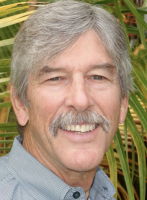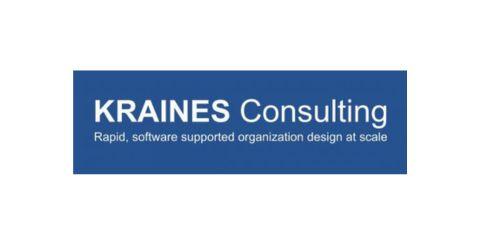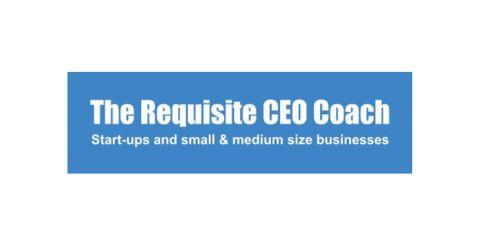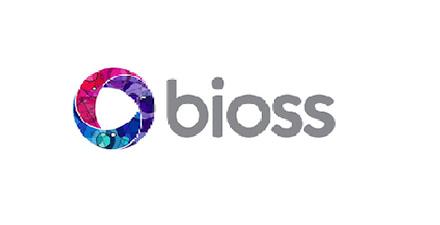Hiring Talent
Decoding Levels of Work In the Behavioral Interview
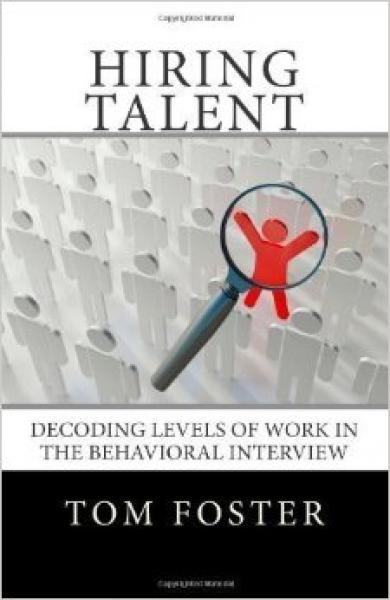
Obtain this book
Book Review: "Hiring Talent: Decoding Levels of Work in the Behavioral Interview" by Tom Foster
Introduction
Tom Foster's "Hiring Talent" offers a systematic approach to the hiring process that combines two powerful methodologies: Elliott Jaques' research on levels of work and the disciplined practice of behavioral interviewing. Despite being one of the most critical managerial functions, hiring often remains an intuition-driven process plagued by poor preparation, stereotyping, and hasty decisions. Foster argues that most hiring managers make their decisions within the first three minutes of an interview based on first impressions, leaving little room for objective evaluation of a candidate's actual capability to perform the required work.
The book presents a structured four-step framework for effective hiring: identifying the level of work in the role, organizing a clear role description, assembling targeted interview questions, and conducting disciplined face-to-face interviews. This approach addresses what Foster calls "the two big lies" that candidates often tell: "Yes, I can" (capability) and "Yes, I will" (commitment), which frequently lead to poor hiring outcomes.
Main Themes
The Science of Levels of Work
The cornerstone of Foster's hiring methodology is Elliott Jaques' research on levels of work, which provides a scientific framework for matching candidates to roles. Jaques, despite being "the least known management scientist on the planet" according to Foster, developed a comprehensive theory that helps hiring managers identify the true complexity of roles.
Foster explains that every task contains a level of decision making and problem solving that can be identified and measured. The key metric for measuring this level is "time-span" - defined as "the length of time a person can effectively work, without direction, into the future, using their own discretionary judgment, to achieve a specific goal." This concept is crucial because it distinguishes one person's capability from another's.
The book outlines five distinct levels of work:
Level I (Time-span: 1 day - 3 months)
- Populated by technicians, operators, and clerical workers
- Focused on individual output, often directly experienced by customers
- Problem-solving through trial and error
- Decisions revolve around pace and quality
- Uses real tools and equipment
Level II (Time-span: 3 - 12 months)
- Filled by supervisors, coordinators, and first-line managers
- Focused on team coordination rather than individual work
- Problem-solving through experience and established best practices
- Tools include schedules, checklists, and meetings
- Value derived from accuracy, completeness, and timeliness
Level III (Time-span: 1 - 2 years)
- Managers responsible for production consistency and system creation
- Focus on designing, maintaining, and improving systems
- Problem-solving through root cause and comparative analysis
- Uses flowcharts, planning, and sequencing
- Value comes from system efficiency and predictability
Level IV (Time-span: 2 - 5 years)
- Typically VPs and directors integrating multiple systems
- Understand dependencies and bottlenecks between systems
- Problem-solving through systems analysis
- Value derived from multi-system efficiency and "whole system" throughput
Level V (Time-span: 5 - 10 years)
- Business unit presidents and small company CEOs
- Make decisions about long-term resource commitments
- Problem-solving through external analysis
- Focus on marketplace value and strategic positioning
Foster applies this framework across various disciplines, from manufacturing to creative agencies, accounting to education, providing context for different industries.
The Four Absolutes for Effective Hiring
Building on Jaques' research, Foster identifies four "absolutes" that determine success in any role:
- Capability - matched to the level of work in the open role
- Skill - technical knowledge and practice related to the role
- Interest/Passion - value for the work in the role
- Reasonable Behavior - appropriate habits and absence of extreme negative temperament
Foster argues that most interviews focus solely on technical knowledge (a small portion of "skill"), while neglecting the other critical elements. He emphasizes that any one of these four absolutes can disqualify a candidate, regardless of strengths in other areas.
Role Description as the Foundation
Foster introduces a structured template for role descriptions that forms the foundation of the entire hiring process:
- Title - A shorthand reference for the role
- Purpose - A single sentence explaining why the role exists
- Level of Work - Identified by decisions, problems, and time-span
- Manager and Manager-Once-Removed - Clear reporting relationships
- Key Result Areas (KRAs) - Groupings of similar tasks and accountabilities
- Tasks and Activities - Specific work required in each KRA
- Accountability - Expected outcomes for each KRA
This structured role description provides the critical infrastructure for developing appropriate interview questions and serves as a reference throughout the hiring process.
Behavioral Interviewing Discipline
Foster emphasizes that "the best predictor of future behavior is past behavior," which forms the basis of his behavioral interviewing approach. He contrasts this with ineffective practices like asking hypothetical questions ("What would you do if...?"), future-based questions ("Where do you see yourself in five years?"), open-ended questions that allow candidates to ramble, and leading questions that telegraph the desired answer.
Instead, Foster advocates constructing questions that:
- Identify critical role requirements
- Connect them to specific behaviors
- Ask about specific times when the candidate demonstrated those behaviors
- Probe for details that reveal the truth
For each written question, Foster recommends asking at least two drill-down questions to clarify responses. With 60-80 prepared questions organized by Key Result Areas, the interviewer can generate 180-240 total questions during a 60-90 minute interview, providing ample data to balance any first impressions or biases.
Key Insights
The Role of the Manager-Once-Removed
One of Foster's most distinct contributions is highlighting the critical role of the "manager-once-removed" (MOR) - the hiring manager's manager - in the hiring process. Far from being an uninvolved observer, the MOR should be the driving force behind a quality hiring decision:
"I hold the MOR accountable for the quality of the decision made by the hiring manager. This accountability creates high levels of collaboration between the MOR, the hiring manager and other interview team members."
The MOR should:
- Evaluate the necessity of the open role
- Properly identify the level of work
- Participate in drafting the role description and interview questions
- Set ground rules for conducting interviews
- Coach the hiring manager through the selection decision
This approach creates clear accountability and ensures disciplined execution of the hiring process.
Structured Question Development for the Four Absolutes
Foster provides specific guidance for developing questions that target each of the four absolutes:
For Capability:
- Questions about the time-span of tasks in former roles
- Probing the complexity of decisions made and problems solved
For Skills:
- Questions about both technical knowledge and practical application
- "Tell me about a project when..." and "Step me through the process..."
For Interest/Passion:
- Identifying behaviors that indicate genuine interest
- "How does a person who values this type of work behave?"
For Reasonable Behavior:
- Questions about habits that contribute to success
- Probing for behaviors under stress to identify potential "Minus T" (negative temperament) issues
The Interview Pace and Discipline
Foster challenges traditional interview approaches by advocating for a much faster pace - approximately one new question every twenty seconds if asking 180 questions in a 60-minute interview. This contrasts sharply with typical interviews where candidates ramble for 2-3 minutes between just six prepared questions.
To maintain this pace, Foster provides tactical advice on interrupting candidates when necessary, refocusing them on specific examples, and taking efficient notes. The goal is to collect concrete data rather than general impressions, allowing for a decision matrix organized by key result areas to compare candidates objectively.
Level of Work Diagnostic Questions
Foster adapts Jaques' "Time-Span Handbook" to create a diagnostic interview that helps identify the level of work in a candidate's current or previous roles. The ten questions probe areas like:
- How work is assigned
- Frequency of assignments
- How completion is recognized
- Review cycles
- Simultaneous project management
Through four illustrative interviews, Foster demonstrates how to listen for clues about levels of work, showing that titles alone (like "supervisor" or "manager") can be misleading.
Conclusion
"Hiring Talent" transforms the typically intuition-driven hiring process into a disciplined, data-driven methodology. Its value comes from:
- Scientific foundation: Grounding hiring decisions in Jaques' research on levels of work provides an objective framework for matching capability to role requirements.
- Comprehensive approach: Addressing all four absolutes (capability, skill, interest, and behavior) ensures candidates aren't selected based on technical knowledge alone.
- Practical methodology: The step-by-step process from role description to decision matrix gives managers concrete tools rather than abstract advice.
- Accountability clarity: Defining the critical role of the manager-once-removed establishes clear responsibility for quality hiring decisions.
For executives and organization design consultants, Foster's methodology offers a way to systematically strengthen the human capital foundation of their organizations. By properly identifying levels of work and matching them to candidate capabilities, companies can avoid the substantial costs of poor hiring: wasted compensation, rework, overwork by others covering for the poor hire, declining morale, and unproductive management time.
While the process requires discipline and preparation, Foster makes a compelling case that this investment pays substantial dividends. As he states, "Hiring Talent is serious business... Look at the annual compensation package, then double or triple that amount to figure what a poor hire will cost the company." By following Foster's methodology, organizations can transform hiring from an intuitive art to a disciplined science, dramatically improving their talent acquisition outcomes.

